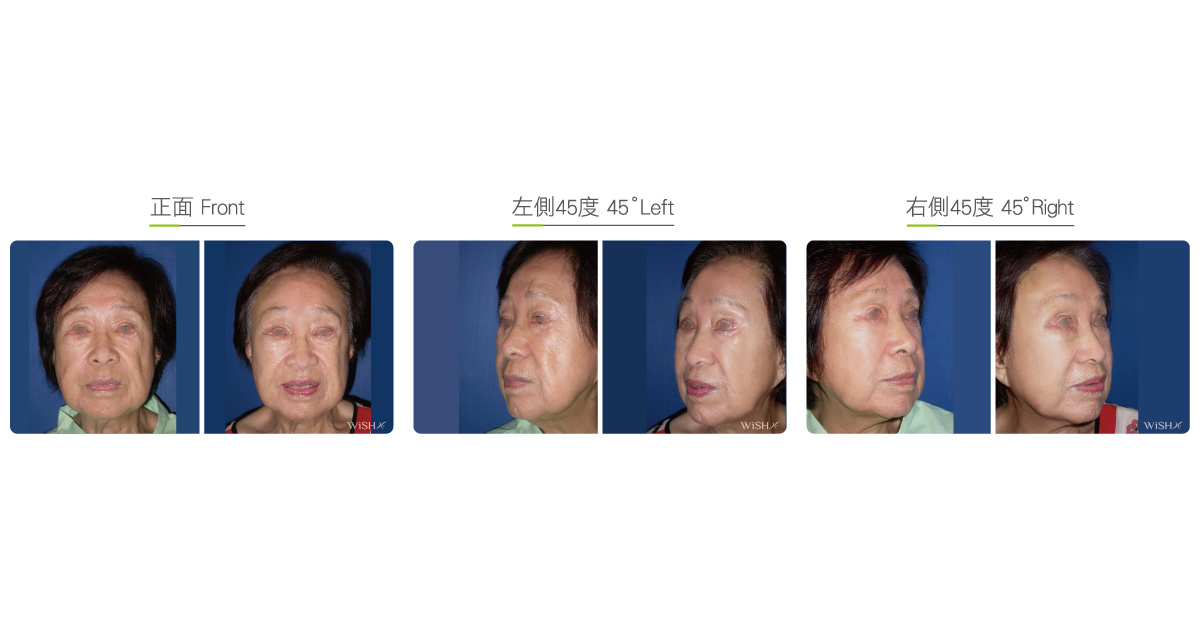Coronal Forehead Lift
This is a full-incisional forehead or brow lift. Due to its large wound and relatively longer recovery period, this surgery has been gradually replaced by endoscopic lifts. However, it still has a certain value for elderly patients with severe forehead skin laxity and sagging. During the surgery, a coronal incision is made approximately 2.5 cm posterior to the scalp hairline that ends near both temples. The forehead skin is fully detached from the periosteum to the superior brow margin. Then, the loosened skin is stretched toward the posterior–superior scalp incision and fixated on the periosteum. Finally, the excess scalp is removed, and the incisions are closed. In this approach, the surgical field is the same as that in endoscopic lifts, but incisions are longer, which allow for the removal of loose skin to provide better and longer-lasting effects in patients with severe forehead laxity than in those undergoing endoscopic surgery. It is suitable for elderly patients requiring longer-lasting effects. Nevertheless, because this surgery may cause a relatively large trauma, the risks of nerve and blood vessel injuries are also increased. Because modern plastic surgery emphasizes minimal invasiveness and safety, this approach is no longer an optimal option for forehead lifts.
Surgical conditions
Duration
- Type of anesthesia: General anesthesia
- Type of incision: An incision of approximately 15–20 cm posterior to the scalp hairline
- Recovery: 7–10 days
- Removal of sutures: 7–10 days
General instructions
No food and water on the day of surgery
- Rubbing or pressing the incisions on the forehead and scalp should be avoided for 1 month postoperatively.
- Hair dying or perming should be avoided for 2 months postoperatively to prevent unwanted irritation or allergy.
- Very good scalp care should be maintained for 3 months postoperatively to prevent hair loss.
Ideal candidates
- Patients with obvious forehead skin laxity and sagging.
- Patients with severely depressed forehead wrinkles or frowning wrinkles.
- Patients with severe drooping of brows and upper eyelids, which even block vision.
- Patients pursuing forehead-tightening effects.
- Patients desiring long and stable results.
- Male patients with very thick and lax forehead skin.
Potential complications
- Scalp scars
- Regional hair loss
- Temporary scalp numbness or itching
- Hematoma, temporary difficulty in eye closure
- Facial nerve injury (mostly temporary)
Surgical advantages
-
Long and stable results (more than 10 years on average).
-
Able to effectively remove much loosened forehead skin with instant and obvious effects.
-
Most effective method to improve forehead and brow sagging in the elderly.
-
Able to produce obvious hairline lift and improve a narrow forehead or low hairline level.
-
Able to effectively get rid of severely depressed forehead wrinkles.
Surgical drawbacks
-
Scars in the scalp may be visible.
-
Surgical incision is long and may cause hair loss.
-
The scalp may present with prolonged numbness or unusual sensations.
-
More likely to cause nerve and blood vessel injuries.
-
Not appropriate for patients with thin hair or a high hairline position.
Possible procedures in conjunction
Comparison of forehead lifts
| Endoscopic forehead lift (Endotine method) | Coronal forehead lift | |
|---|---|---|
| Ideal candidates | Patient with mild and moderate forehead laxity or brow sagging or congenital excessively low brow position | Patients with severe aging on the forehead and brow sagging as well as highly depressed forehead shadows |
| Age | 20–60 years old | Elderly patients (>60 years old) |
| Type of anesthesia | IV sedation + local anesthesia | General anesthesia |
| Materials used | Bioabsorbable Endotine implant | Suture fixation |
| Surgical incision | Short (4–5 incisions of approximately 1.5–2 cm) | Long (1 incision of approximately 15–20 cm) |
| Drainage tube | No | Yes |
| Period of recovery | Short | Relatively long |
| Nerve injury | Very low | Likely |
| Probability of hair loss | Relatively low | Relatively high |
| Duration of surgical results | Natural | Tight |
| Persistence | 6–8 years | Over 10 years |



